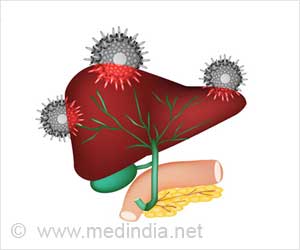- The EURORealTime APOE test identifies genetic risk factors for adverse effects in Alzheimer’s treatments
- Accurate APOE genotyping can enhance personalized treatment and improve clinical outcomes for Alzheimer’s patients
Patients with the APOE-e4 allele are at higher risk of amyloid-related imaging abnormalities (ARIA), a side effect of anti-amyloid drugs
Lecanemab, also known as Leqembi, the first anti-amyloid medicine for the treatment of Alzheimer’s disease was authorized by the United States Food and Drug Administration (FDA) in July 2023. Since then, the FDA has approved donanemab (Kisunla), an anti-amyloid drug, with more in development.
Advertisement
Identifying Who is at Risk of Side-Effects of Alzheimer’s Medicines
Amyloid-related imaging abnormalities (ARIA) are a potentially significant side effect of anti-amyloid drugs that cause brain edema or small bleeding spots. If a person is a positive carrier of the apolipoprotein E-E4 gene (APOE-e4), they are at a higher risk of getting ARIA.
To assist prevent any major adverse effects from taking anti-amyloid medications, researchers at Revvity’s EUROIMMUN have devised a test to help establish which APOE variations a person may have, potentially predicting whether or not they may react negatively to these types of therapies.
The work was recently presented at the Association for Diagnostics and Laboratory Medicine (ADLM) 2024, but its findings have yet to be published in a peer-reviewed journal (1).
Advertisement
EURORealTime APOE Test Determines Risk of Alzheimer’s Disease
This new test, known as the EURORealTime APOE test, is a real-time PCR (polymerase chain reaction) test that works by amplifying genomic DNA isolated from whole blood to detect the three APOE alleles that a person has in its genome, according to Maite Sabalza, Ph.D., senior scientific affairs manager at EUROIMMUN US and poster presenter at ADLM 2024.
“The APOE-e4 allele is the most important for Alzheimer’s disease risk,” she said afterwards. “About 25% of people in the United States have at least one APOE-e4 allele, with approximately 5% having two copies. Having two APOE-e4 genes increases the risk of Alzheimer’s disease by up to 15 times.
The APOE-e4 gene increases the chance of ARIA side effects.
In addition to being at a higher risk for Alzheimer’s disease, Sabalza claims that those with the APOE-e4 allele are more prone to experience the ARIA side effect when taking anti-amyloid medicines for Alzheimer’s. “ARIA involves brain swelling or small bleeding in the brain,” she told me. “People who carry two copies of the APOE-e4 allele may experience this adverse effect more frequently and severely. ARIA can develop within the first few weeks or months of treatment, lowering the effective dose.”
Advertisement
Types of Amyloid-Related Imaging Abnormalities
-
Amyloid-Related Imaging Abnormalities- Edema (ARIA-E):
This refers to the development of brain swelling or edema, which can cause symptoms such as headaches or confusion. Sabalza stated that specialists believe it pertains to the elimination of amyloid plaques.
-
Amyloid-Related Imaging Abnormalities- Hemorrhage (ARIA-H):
This is caused by tiny bleeding events in the brain, which can be detected by imaging. Sabalza added that researchers believe the hemorrhages are linked to amyloid-targeting therapy.
“Although ARIA is typically asymptomatic, serious and life-threatening events may occur, and as such, are included as warnings on prescribing information for anti-amyloid drugs,” according to Sabalza. “ARIA-E from aducanumab resulted in one death, as did ARIA-H from donanemab. Because of these potential side effects, it is recommended that patients be screened for APOE genotypes before beginning such medications to consider the risks of ARIA.”
When Will the EURORealTime APOE Test be Available?
Sabalza stated that the EURORealTime APOE test is presently exclusively available for research purposes. “The next steps would involve more research and clinical studies to better understand a person’s risk of developing ARIA when treated with anti-amyloid drugs for Alzheimer’s disease,” she informed us.
“APOE genotyping can also be used for patient stratification, which can aid in determining inclusion criteria for clinical trials as new medications are developed and biomarkers are discovered. This technique not only improves clinical trial precision, but it also assures that patients receive medicines that are most appropriate and beneficial for their genetic profile. These measures are critical for promoting customized treatment and improving outcomes for Alzheimer’s disease patients,” she said.
Verna Porter, M.D., a board-certified neurologist and director of the Dementia, Alzheimer’s Disease, and Neurocognitive Disorders at Pacific Neuroscience Institute in Santa Monica, CA, told MNT that her initial reaction to the idea of accurately genotyping APOE in patients with this test was cautious optimism.
“The EURORealTime APOE test appears to offer a sensitive and reliable method for determining APOE alleles, potentially making it a valuable tool for improving risk stratification for potential anti-amyloid therapeutic treatments,” according to Porter. “This new technique holds significant promise as a means of accurately identifying patients at risk for severe side effects from anti-amyloid drugs.”
“The next steps for this research should include larger, more diverse clinical trials to further validate the test’s accuracy and reliability across different populations,” Porter said. “It would also be useful to include this genotyping test in standard clinical practice and provide guidelines for its usage in treatment planning. Exploring the test’s cost-effectiveness and accessibility will also be critical to ensuring wider adoption.”
Importance of Evaluating Amyloid-Related Imaging Abnormalities Risk
MNT also spoke with Rehan Aziz, M.D., program director of the Psychiatry Residency Program, associate program director of the Geriatric Psychiatry Fellowship Program at Hackensack Meridian Jersey Shore University Medical Center, and associate professor of Psychiatry and Neurology at Hackensack Meridian School of Medicine in New Jersey, about the study.
“In the coming years, there will likely be high utilization of anti-amyloid medications like lecanemab and donanemab in patients with either mild cognitive impairment or mild dementia due to Alzheimer’s disease, as they are the first disease-modifying drugs for Alzheimer’s disease,” said Aziz.
“It is critical for doctors to understand whether a patient is at high risk of having a bad reaction to the new anti-amyloid drugs to prevent or reduce the risk of brain swelling and bleeding.” ARIA can be a severe event that worsens symptoms and may result in hospitalization or death. It’s still unclear what the long-term risks are from these incidents. So, the ideal solution is to reduce ARIA as much as possible,” he added.
“Other APOE genotyping methods exist, so for this one to be widely adopted it will need to be broadly available, covered by insurance, and cost-effective,” said Aziz.
References:
- New real-time PCR test for APOE genotyping in patients with Alzheimer’s disease before anti-amyloid therapy
(M. Sabalza1, D. Meißner2, A. Denker2, S. Stallmann2, S. Milbredt2, S. Saschenbrecker2, U. Steller2. 1EUROIMMUN US Inc, Mountain Lakes, NJ, 2Institute for Experimental Immunology, affiliated to EUROIMMUN Medizinische Labordiagnostika AG, Lübeck, Germany, Lübeck, Germany, https://www.abstractsonline.com/pp8/#!/20594/presentation/344)
Source-Medindia



